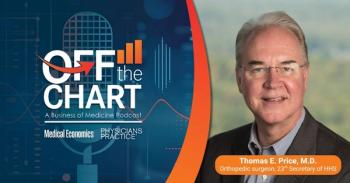
Four Myths That Adversely Affect Physician Asset Values
Here are four common "myths" that can cause physicians to request less than fair market value for their practice assets.
In a prior
MYTH #1: A Hospital Cannot Pay for Practice “Goodwill”
While a hospital may prefer not to pay a practice for “goodwill,” no law or regulation exists that would prohibit “goodwill” from arising from the purchase of practice assets.
For example, some physician practices provide ancillary services (e.g., imaging). An ancillary service line of business may be valued as a “going concern” using the discounted cash flow method, a method that is consistent with applicable law and standard valuation principles. This valuation method could result in a value for the ancillary service line that exceeds the value of the assets used to provide those ancillary services. This excess value might be treated as “goodwill” for the acquiring hospital’s accounting purposes. It is a standard economic and valuation reality that a well-operated business is worth more than the sum of its identifiable component tangible and intangible assets.
A practice should assure that it is aware of the full value of its ancillary services; if not, it runs the risk of seeking less than fair market value for its practice assets.
MYTH #2: Intangible Practice Assets Have No Value
Similar to the “goodwill” myth, a hospital may take the position that it may lawfully pay for a practice’s “hard assets” only. This is incorrect.
Practices typically own and can sell valuable intangible assets such as custodial rights to patient charts, “trained and assembled” physician and non-physician workforces (i.e., the “workforce-in-place”), and even the practice name. Each of these intangible assets provides a measurable economic benefit to a hospital and has a related fair market value.
Some appraisers may further this myth by asserting that practice intangible assets have value only if the practice as a whole has a going concern value. This position misapplies standard valuation principles and is easily disproved. Even if a business as a whole is not operated at a profit, it plainly has a break-up value connected to its component tangible and intangible assets (intangible assets are sold out of bankruptcy estates on a daily basis).
A practice should assure that an appraiser takes into account and values all of the practice’s material intangible assets, regardless of whether the practice as a whole has a going concern value.
MYTH #3: Practice Value Depends on Future Employment Compensation
A suggestion that a practice is more valuable if the practice physicians accept lower future hospital employment compensation is inconsistent with standard valuation principles.
Simply put, practice value and post-transaction compensation are independent. A practice should assure than an appraiser will correctly and separately determine the fair market value of employment compensation and fair market value of the practice.
MYTH #4: A Valuation Cannot Consider Current Practice Revenue from Physician Referrals
A suggestion that the appraisal of a practice’s ancillary services as a going concern cannot consider the revenue generated by the practice’s physicians is inconsistent with the Stark Law and standard valuation principles.
An ancillary service line appraisal using the discounted cash flow method determines the value of the service line to the practice (i.e. seller) and, therefore, the floor price that the practice should be willing to accept to sell that service line. This type of valuation is not based on future referrals from any particular practice physician to the hospital (i.e. buyer). The hospital is not purchasing referrals; instead, the hospital is purchasing a collection of assets that provide a level of services for which the local market has demonstrated a predictable demand.
Conclusion
A practice should assure that it is fully educated regarding how applicable laws may affect practice valuations. Practices should negotiate based on applicable law and valuation principles and should quickly dispatch any myth that might enter the process.
In the future, I will identify several “myths” that cause wide variance in the determination of the fair market value of another essential element of integration transactions – physician employment compensation.
For more on John C. Erickson III and our other bloggers, click
Newsletter
Optimize your practice with the Physicians Practice newsletter, offering management pearls, leadership tips, and business strategies tailored for practice administrators and physicians of any specialty.




